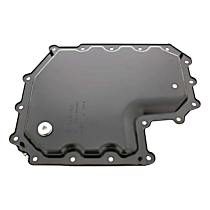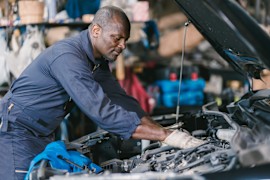Genuine Porsche Oil Pans
Refine by:
Shop Catalog
Showing 1 - 2 of 2 results
Sort by:
Part Number: GXL94610701524
Vehicle Info Required to Guarantee Fit
$216.49
Vehicle Fitment
- 2011 - 2016 Porsche Panamera 4 All Engines
- 2011 - 2016 Porsche Panamera Base All Engines
- 2016 Porsche Panamera Edition All Engines
- 2016 Porsche Panamera 4 Edition All Engines
Product Details
Quantity Sold : Sold IndividuallyWarranty : 24-month or 24,000-mile limited warranty
Part Number: GXL94810701525
Vehicle Info Required to Guarantee Fit
$147.49
Vehicle Fitment
- 2010 - 2016 Porsche Panamera Turbo All Engines
- 2012 - 2016 Porsche Panamera Turbo S All Engines
- 2013 - 2016 Porsche Panamera GTS All Engines
- 2014 - 2016 Porsche Panamera Turbo Executive All Engines
- 2010 - 2013 Porsche Panamera 4S All Engines
- 2014 - 2016 Porsche Panamera Turbo S Executive All Engines
- 2010 - 2013 Porsche Panamera S All Engines
- 2016 Porsche Panamera Exclusive All Engines
Product Details
Quantity Sold : Sold IndividuallyWarranty : 24-month or 24,000-mile limited warranty
Page 1 of 1 | Showing 1 - 2 of 2 results
Related Brands
Helpful Automotive Resources
The Oil Lubrication System: What It Is, How It Works, and MorePro Tips are nuggets of information direct from ASE-certified automobile technicians working with CarParts.com, which may include unique, personal insights based on their years of experience working in the automotive industry. These can help you make more informed decisions about your car.
Handy Tools and Tips for a DIY Oil ChangeSome tools and equipment you’ll need for a DIY oil change include safety equipment (glasses/gloves), wrenches (oil filter and torque wrenches), wheel ramps/chocks, and motor oil.
Oil Catch Can: What It Does, Advantages, Disadvantages, and FAQsIt directly injects the fuel into the main combustion chamber of each cylinder before mixing the air and fuel inside the chamber. On earlier gasoline systems, the fuel injectors sprayed gasoline mist directly on the intake valve, which tends to keep it pretty clean.




